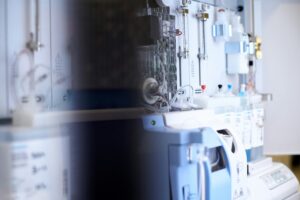In the intricate landscape of dioxin analysis, an arsenal of sophisticated techniques is employed by regulatory agencies, environmental scientists, and industries to vigilantly monitor and manage contamination. Let’s delve into some of the pivotal methodologies employed in dioxin analysis, including the consideration of Gas Chromatography with Ultraviolet Spectroscopy (GC-UV).
Gas Chromatography-Mass Spectrometry (GC-MS)
Widely acknowledged as the gold standard in dioxin analysis, GC-MS stands out for its ability to meticulously separate complex mixtures, such as dioxins, into individual components based on their chemical properties. The subsequent identification and quantification using mass spectrometry ensure a level of precision that allows for accurate measurements, even at trace levels of dioxins.
Gas Chromatography with Ultraviolet Spectroscopy (GC-UV)
GC-UV, an emerging technique, combines the separation power of gas chromatography with the sensitivity of ultraviolet spectroscopy. This hybrid approach holds promise in dioxin analysis by providing an additional layer of detection based on the absorbance of UV light by analytes. While lacking the specificity of mass spectrometry, GC-UV brings unique advantages to dioxin analysis by providing complementary information. It excels in distinguishing compounds with distinctive UV absorbance characteristics, enhancing the overall capability to identify and characterize analytes in a cost-effective manner. The synergy of gas chromatography with ultraviolet spectroscopy offers valuable insights, making it a valuable addition to the analytical toolkit for comprehensive dioxin analysis.
High-Resolution Mass Spectrometry (HRMS)
In the pursuit of heightened accuracy, HRMS instruments surpass conventional MS, offering superior mass accuracy and resolution. This advancement facilitates the more precise identification and quantification of dioxin congeners, minimizing the potential for false positives/negatives in analytical outcomes.
Isotope Dilution Mass Spectrometry (IDMS)
A technique designed to elevate the accuracy of dioxin analysis, IDMS involves introducing known amounts of isotopically labeled internal standards to the sample. This not only enables precise quantification but also corrects for matrix effects and instrument variations, further refining the reliability of results.
Sample Preparation
Given that dioxins are frequently found in intricate matrices like soil, sediments, and biological tissues, meticulous sample preparation is imperative. Techniques such as solid-phase extraction (SPE) and liquid-liquid extraction (LLE) are employed to isolate dioxins from these matrices before analysis. Additional clean-up steps, including gel permeation chromatography (GPC) and sulfur removal, may be necessary to eliminate interfering compounds.
Derivatisation
Dioxins are subjected to analysis in their methyl derivatives, a process that enhances their chromatographic behavior and sensitivity. Chemical derivatisation involves the addition of a methyl group to dioxin molecules, rendering them more amenable to GC-MS analysis.
Quality Control
Ensuring the accuracy and precision of dioxin analysis mandates rigorous quality control measures. Certified reference materials, blank samples, and spiked samples are integral components of this process, along with meticulous instrument calibration and validation procedures.
Data Interpretation
The vast amount of data generated during dioxin analysis necessitates sophisticated software tools for processing and interpretation. These tools play a pivotal role in identifying specific dioxin congeners, calculating concentrations, and assessing compliance with regulatory limits.
High-Resolution Sampling
Minimizing contamination during sample collection is paramount, and high-resolution sampling techniques, such as utilizing stainless steel or glass containers, are deployed to prevent the inadvertent introduction of dioxins from sampling equipment.
Comprehensive Analytical Standards
The cornerstone of dioxin analysis lies in the availability of comprehensive analytical standards. Certified reference materials and standard operating procedures (SOPs) are indispensable tools, utilized to calibrate instruments and ensure the utmost accuracy in quantification.
While GC-UV lacks the specificity of mass absorbance, it can offer valuable complementary information in dioxin analysis, particularly when cost considerations come into play. Integrating GC-UV into the analytical toolkit may enhance overall detection capabilities, providing a more comprehensive understanding of dioxin contamination in various environmental and industrial contexts.




